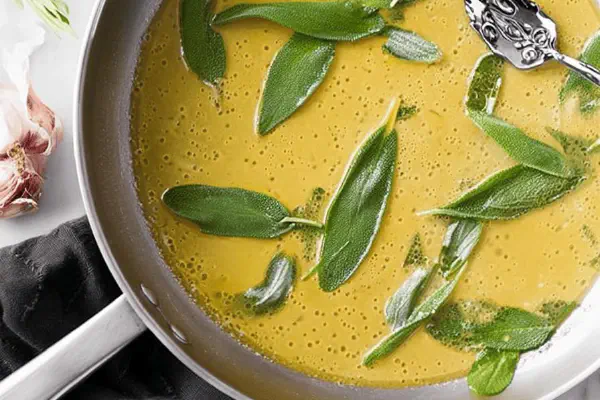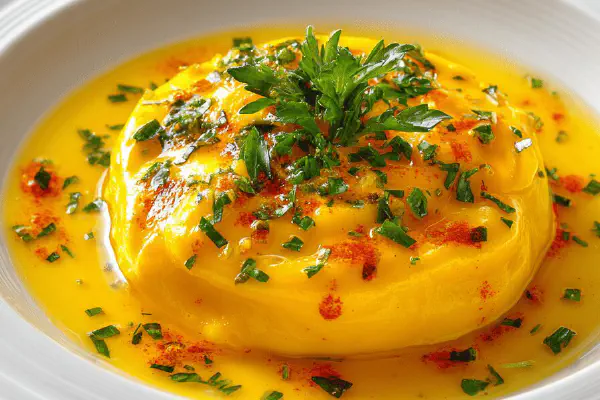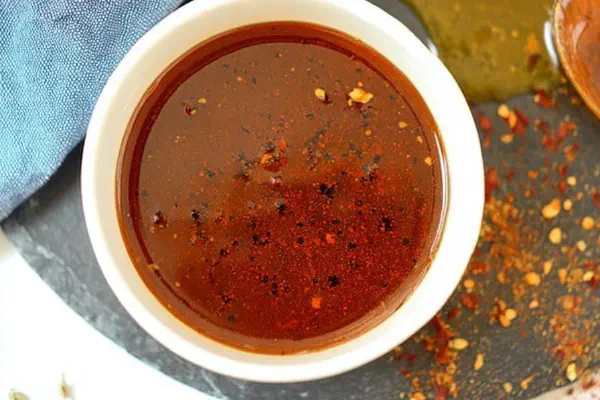Brown Sage Butter Sauce

By Emma
Certified Culinary Professional
Ingredients
- 1 stick cultured salted butter
- 3 garlic cloves finely grated
- 12 fresh sage leaves
- Freshly cracked black pepper
About the ingredients
Method
- Heat medium skillet on medium. Add butter, grated garlic, whole sage leaves, cracked black pepper right after. Butter should start melting, stirring constantly with wooden spoon or whisk. The faint popping sound means it’s alive. Watch for butter turning golden, that faint nutty, toasted aroma. 5 minutes max. Don’t rush; swirl the pan gently to stop burning.
- Butter begins foaming — milk solids rising up. Turn off heat. Skim off foam using metal spoon, skim and discard. Leaves behind clean, bright butter with sage fragrance layered in. If you leave solids, sauce can taste bitter or grainy; texture ruins.
- Serve immediately over pasta or roasted veggies, or spoon onto grilled protein. Sauce thickens slightly as it cools, beware – reheat gently or butter hardens. If butter browns too dark, toss – tastes burnt and sour.
- Optional twist – mince one small shallot, cook with garlic for a milder, sweet undertone. No garlic? Use garlic powder but it won’t be as fresh. Don’t skip sage, it’s what cuts through fat.
- Substitution for butter in a pinch: ghee, but flavor weaker and no milk solids to brown.
- Keep ingredients cold until last minute so butter melts evenly. Overheating? Butter smoke point is low; when smoke rises, pan too hot, start over.
- Try pressing sage leaves into softened butter first for infused butter control—then melt gently.
Cooking tips
Chef's notes
- 💡 Butter melting slow edges first; use medium heat only. Too hot burns garlic fast. Stir constant keeps milk solids from sticking; aroma is timer. Nutty smell means browning right. Foam rises—skim with metal spoon before it sours the sauce. Timing critical, 5 minutes tops. Swirling pan helps even browning—don’t rush or high heat scorches instantly.
- 💡 Substitute cultured butter with salted sweet cream butter but flavor differs. Ghee works but no milk solids to brown hence less aroma. Garlic grated, not chopped; releases flavor fast and even without burning chunks. Swap shallots minced for milder sweetness, add earlier with garlic. Fresh sage whole leaves for crisp edges; dried sage gives bitter notes and no crunch.
- 💡 Watch milk solids carefully popping then foaming on surface. When foam peaks, turn off heat immediately—left too long turns sauce bitter grainy. Skim that foam then discard, it’s unwanted bitterness. If dark brown specks appear, pull pan off now. Sauce consistency thins hot, thickens cold. Reheat low to avoid hard butter clumps. Avoid boiling, use double boiler for warming.
- 💡 Black pepper cracked fresh, no pre-ground. Adds gritty heat contrasting butter richness. Add pepper early but not too much; too rough overtakes sage. Fresh sage crushed under knife releases herbal oils better. Keep everything cold beforehand; butter melts evenly slow without sudden oil separation. Overheated butter smokes; pan too hot, start over. Lace in lemon juice or white wine after off heat brightens sauce weight.
- 💡 Prepare by pressing sage into softened butter first—infuses flavor deeper but then melt slowly. Butter quality matters—cheap variants burn too fast flavor dulls faster. Garlic burns fast at high temp so prep all before heat. Constant stirring, scraping pan bottom prevents sticking. Sauce layers from creamy melting to toasted nutty aroma; smell marks stages. Discard burnt butter—bitterness kills sauce.
Common questions
How do I prevent butter burning?
Medium heat only. Butter melts slow; too hot garlic scorches fast. Stir constant. Watch color shift from pale yellow to light gold. Smell nutty. Burnt bits smell acrid. Pull pan off if unsure. Starting over better than ruined sauce.
Can I use dried sage instead?
Dried sage not recommended—no crisp texture, makes sauce bitter fast. If only option, add earlier and remove before browning complete. Fresh sage oils release better with heat. Rosemary sub okay but toss early to avoid bitterness too. Freshness key here.
What if foam isn’t easy to skim?
Use thin metal spoon or small ladle. Foam thin layers on top—skimming repeated needed. Leaving foam adds bitterness, grainy texture. If foam stubborn, cool heat more and wait until easier to remove. Foam signals milk solids coagulating; skim fast.
How to store leftover sauce?
Refrigerate in airtight container—solidifies hard. Reheat slowly over double boiler or low heat, stirring constantly to avoid clumps. Can freeze but texture changes. If thickness too much when cold, stir in splash warm water or butter to loosen. Avoid microwave heating—it destroys delicate flavors.



